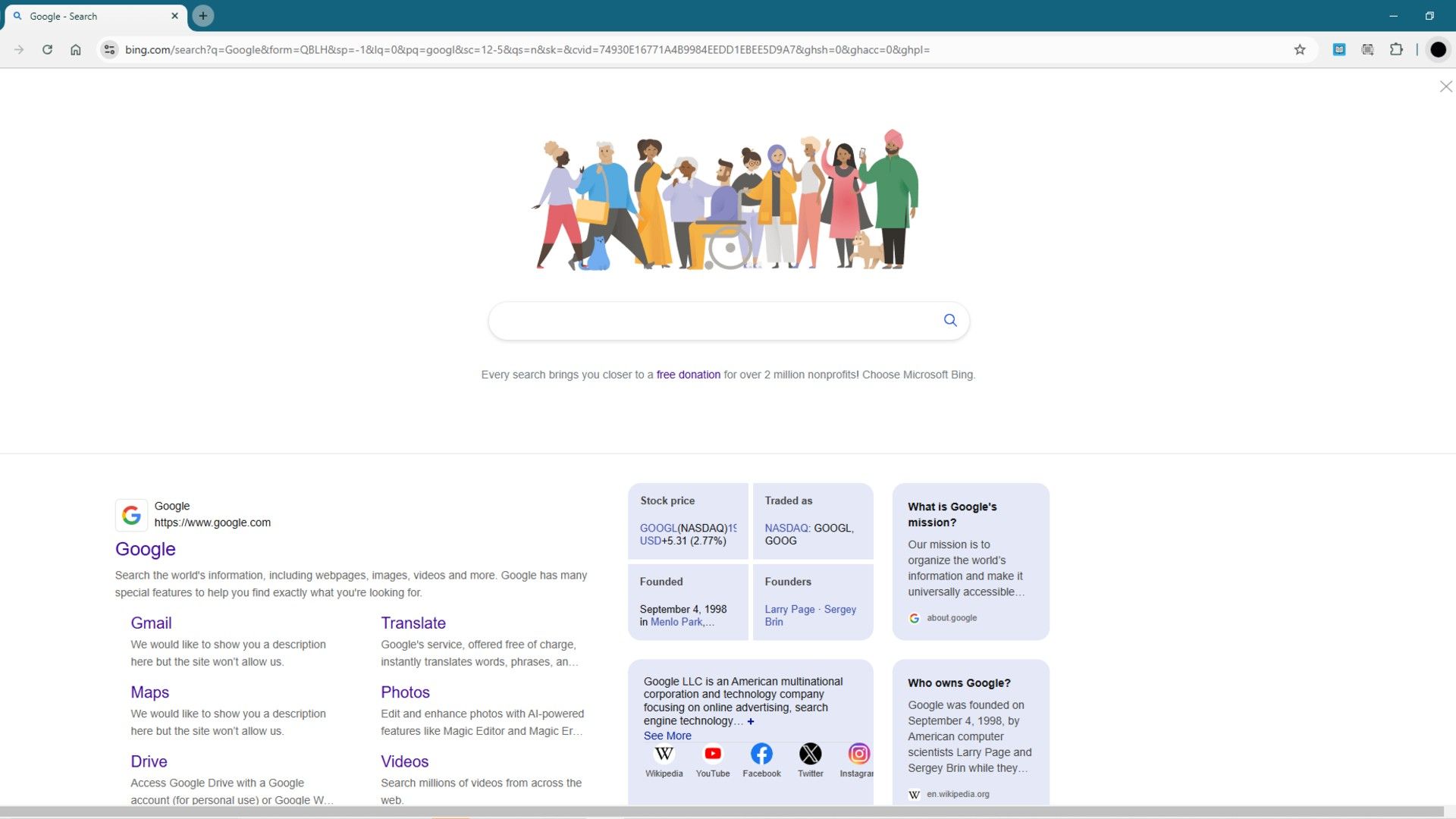Microsoft recently got rid of a misleading design in its Bing search engine. If someone searched for Google on Bing, they would be treated to a result that was eerily like Google itself.
This design looked a lot like Google’s search results page, with a search bar similar to Google’s, a picture that resembled a Google Doodle, and text placed in a similar way. It even had an automatic scrolling feature that hid Bing’s own search bar at the top of the page. We reported this earlier this month, and it was meant to trick Bing users into thinking they were using Google. The misleading design was removed just a few days after people found out about it.
Microsoft hasn’t said anything publicly about removing the fake Google user interface, but some people at Google weren’t happy about it. It was pretty obviously a way for Bing to try to keep users on their search engine. Google is just more popular, but tricking users shouldn’t be the way Bing tries to keep them.
It’s not like Bing is bad, it’s actually a great search engine. However, Microsoft should try to keep users on its engine in a different way, like pushing an incentive. Bing briefly had a resurgence with Bing Chat, but that functionality has now been spun off as the Copilot web app. One mostly unknown incentive about Bing is that it gives Microsoft Reward points for using the engine. Those of us who use Xbox are familiar with these points, but it’s often not brought up that Bing gives that incentive.
Those points add up to real-world money, which is a great reason to use Bing. Spending time pushing the idea that users can be rewarded for using Bing is a lot more effective than showing the user you want to fool them into continuing to use your service.




